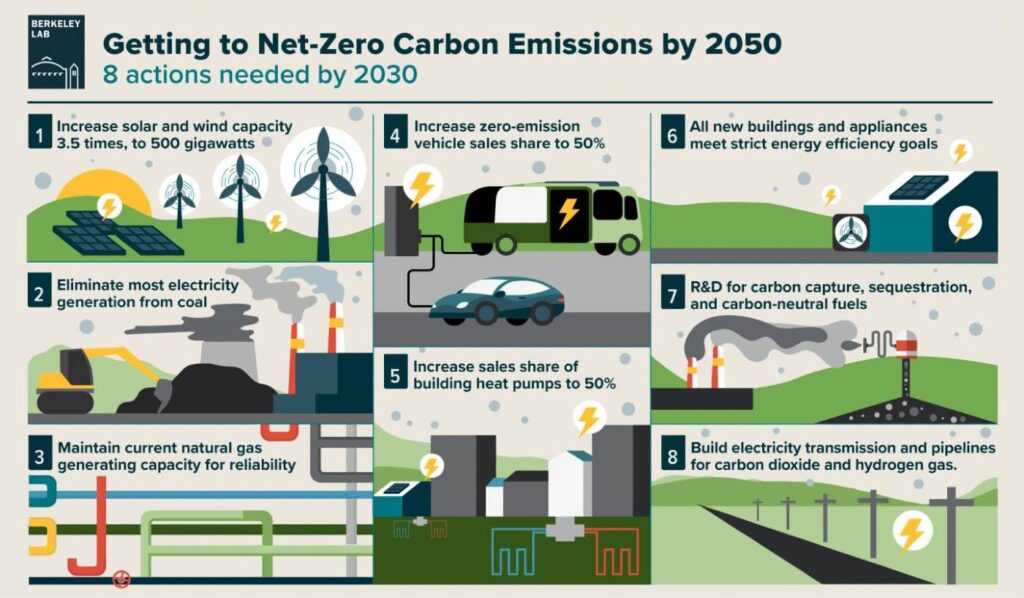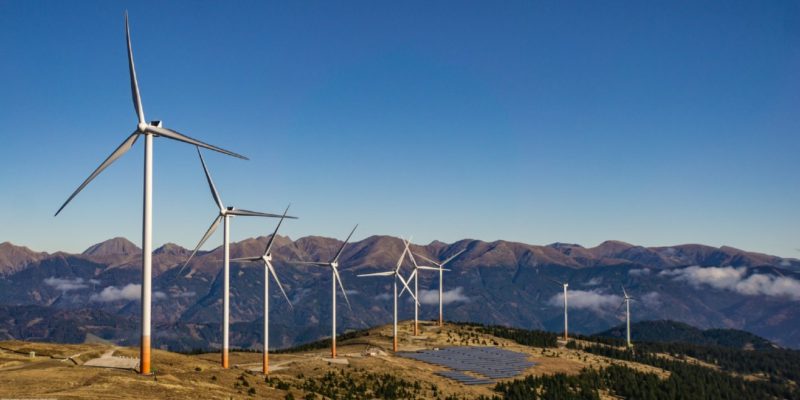U.S. Can Run Primarily on Renewable Energy by 2050 For Cost of $1 Per Person Per Day—Says New Research
Reaching zero net carbon dioxide emissions from energy and industry by 2050 can be achieved by rebuilding the US energy infrastructure to run primarily on renewable energy, at a net cost of about $ 1 per person per day, according to a new study.
Researchers from the Department of Energy’s Lawrence Berkeley National Laboratory, the University of San Francisco (USF), and Evolved Energy Research created a detailed model of the entire US energy and industrial system to produce the first detailed peer-reviewed study of how achieve carbon neutrality by 2050.
According to the Intergovernmental Panel on Climate Change (IPCC), the world must reach zero net CO2two emissions by mid-century in order to limit global warming to 1.5 degrees Celsius and avoid the most dangerous impacts of climate change.
The researchers developed multiple feasible technology pathways that differ widely in remaining fossil fuel use, land use, consumer adoption, nuclear power, and biofuel use, but share a key set of strategies.
“By methodically increasing energy efficiency, switching to electric technologies, using clean electricity (especially wind and solar power), and deploying a small amount of carbon capture technology, the United States can achieve zero emissions,” the authors write in Carbon Neutral Pathways for the United States, recently published in the scientific journal AGU Advances.
Net zero means achieving a balance between greenhouse gas emissions released into the atmosphere and those removed.
Transforming the infrastructure

“The decarbonization of the US energy system is fundamentally an infrastructure transformation,” said Berkeley Lab senior scientist Margaret Torn, one of the study’s lead authors. “It means that by 2050 we need to build many gigawatts of wind and solar power plants, new transmission lines, a fleet of electric cars and light trucks, millions of heat pumps to replace conventional furnaces and water heaters, and more efficient buildings. from an energy point of view. – while continuing to research and innovate new technologies ”.
In this transition, very little infrastructure would need “early retirement” or replacement before the end of its economic life. “No one is asking consumers to trade in their new car for an electric vehicle,” Torn said. “The point is that efficient, low-carbon technologies should be used when it comes time to replace current equipment.”
The routes studied have net costs that range between 0.2% and 1.2% of GDP, with higher costs as a result of certain offsets, such as limiting the amount of land granted to solar and wind farms. On lower cost routes, about 90% of electricity generation comes from wind and solar energy. One scenario showed that the US can meet all its energy needs with 100% renewable energy (solar, wind and bioenergy), but it would cost more and require more land use.
“We were pleasantly surprised that the cost of the transformation is lower now than in similar studies we did five years ago, although this achieves a much more ambitious carbon reduction,” Torn said. “The main reason is that the cost of wind and solar energy and batteries for electric vehicles has fallen faster than expected.”
Scenarios were generated using complete new energy models with details of both energy consumption and production, such as the entire US building stock, vehicle fleet, power plants and more, for 16 geographic regions Costs were calculated using projections for fossil fuels and renewable energy prices from the DOE Annual Energy Outlook and the NREL Annual Technology Baseline report.
PLUS: The Empire State Building is now 100% powered by the wind, along with 13 other related buildings
The cost figures would be even lower if they included the economic and climate benefits of decarbonizing our energy systems. For example, less dependence on oil will mean less money spent on oil and less economic uncertainty due to fluctuations in the price of oil. Climate benefits include the avoided impacts of climate change, such as extreme droughts and hurricanes, air and water pollution averted from the burning of fossil fuels, and improved public health.
The economic costs of the scenarios are almost exclusively capital costs derived from the construction of new infrastructure. But Torn notes that there is an economic advantage to that spending: “All that infrastructure construction equates to jobs, and potentially jobs in the US, rather than sending money abroad to buy oil from other countries. There is no question that there will have to be a well thought out economic transition strategy for fossil fuel-based industries and communities, but there is also no question that there are many jobs in building a low-carbon economy. “
The next 10 years
An important finding of this study is that the actions required in the next 10 years are similar regardless of the long-term differences between the pathways. In the short term, we need to increase renewable energy generation and transmission, ensure that all new infrastructure such as cars and buildings are low-carbon, and maintain current natural gas capacity for now to ensure reliability.
“This is a very important finding. We don’t need to have a big battle now over issues like short-term construction of nuclear power plants, because new nuclear power is not required in the next ten years to be on a net zero emissions path. Instead, we should formulate policies to advance the steps that we know are needed now, while accelerating R&D and further developing our options for the choices we must make starting in the 2030s, ”said the lead author of the study, Jim Williams, associate professor of Power Systems Management at USF and a Berkeley Lab affiliate scientist.
The net negative case
Another important achievement of this study is that it is the first published work that provides a detailed roadmap of how the US energy and industrial system can become a source of CO negative.two emissions in the middle of the century, which means that more carbon dioxide is removed from the atmosphere than is added.
According to the study, with higher levels of carbon sequestration, biofuels and electric fuels, the US energy and industrial system could be “net negative” to the tune of 500 million metric tons of CO.two removed from the atmosphere each year. (This would require more electricity generation, land use, and interstate transmission to accomplish this.)
The authors calculated that the cost of this net negative pathway was 0.6% of GDP, only slightly higher than the cost of the main carbon-neutral pathway of 0.4% of GDP. “This is affordable to society for energy reasons only,” Williams said.
CHECK OUT: Arctic oil drilling plans suffer ‘surprising setback’ as almost ‘no one shows up’ for sale
When combined with an increase in COtwo Absorption by land, primarily through changing agricultural and forest management practices, the researchers calculated that the net negative emissions scenario would put the US on the path of a global trajectory to reduce atmospheric COtwo concentrations to 350 parts per million (ppm) at some distance in the future.
Many scientists have described the 350 ppm endpoint of this global trajectory as what it would take to stabilize the climate at levels similar to pre-industrial times.
Source: Berkeley Laboratory








